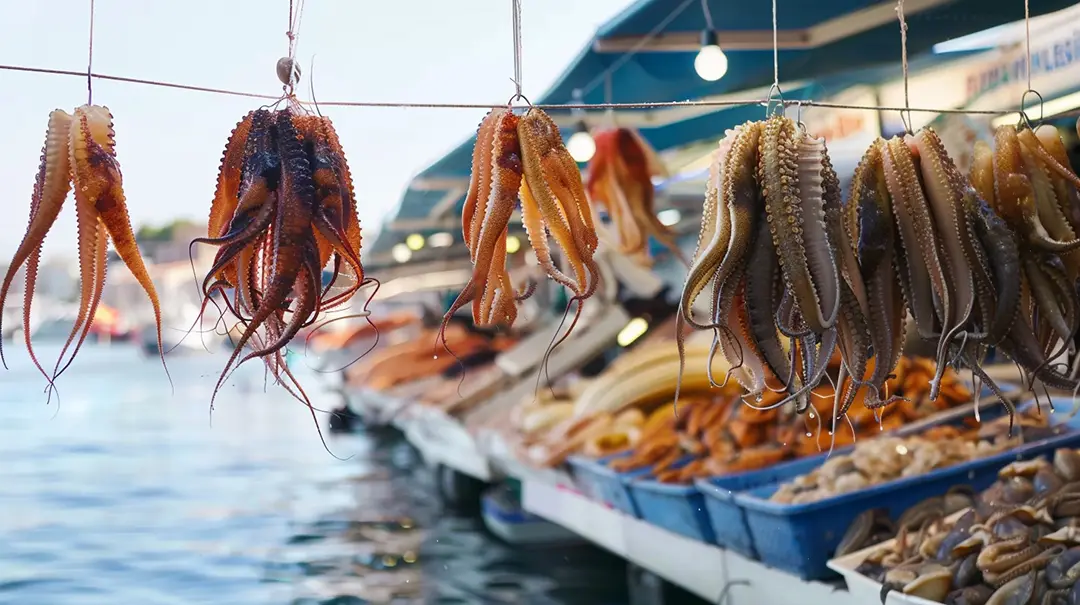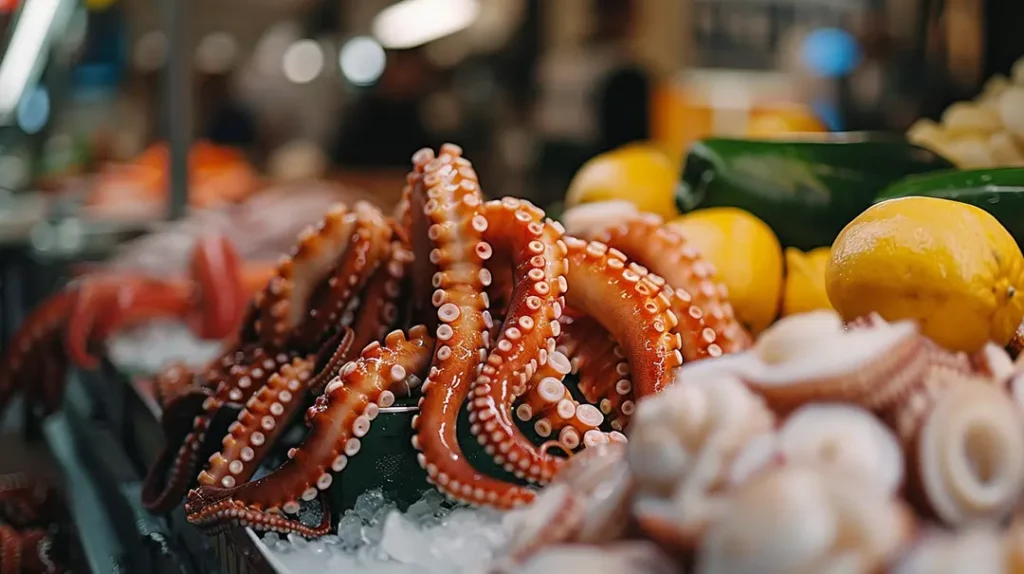
The Mediterranean Sea boasts a rich variety of table fish, from sea bass to bluefin tuna, essential to the region's culinary traditions. These fish are central to dishes in Spain, Italy, Greece, and Malta, promoting the health benefits of the Mediterranean diet. Whether grilled or stewed, these fish offer a diverse range of flavours and textures, embodying a cultural and culinary heritage in the Mediterranean.
The Mediterranean Sea offers a bountiful variety of fish, integral to the region’s cuisine and diet. From delicate sea bass to the prized bluefin tuna, these fish feature prominently in dishes across Spain, Italy, Greece, and Malta. The Mediterranean diet, celebrated for its health benefits, advocates for frequent fish consumption, suggesting at least two servings weekly. The region’s culinary repertoire includes simple grilled preparations and intricate stews, showcasing the versatility of fish. A notable example is the Maltese lampuki, a seasonal favourite used in pies, carpaccio, and more. Beyond their nutritional value, fish also embody a rich cultural and culinary heritage in the Mediterranean.
Among the most sought-after fish in Mediterranean cuisine are sea bass, gilthead sea bream, and European hake. These species, alongside sardines, bluefin tuna, and grouper, are abundant in coastal waters and are staples in traditional dishes. Other popular choices include corvina, sea bream, and conger eel, with sizes ranging from small sardines to massive bluefin tuna, which can exceed 3 metres in length and weigh up to 700 kg. The diversity of these species contributes significantly to the region’s culinary traditions, offering a range of flavours and textures suitable for both everyday meals and special occasions.
These fish are not only staples in Mediterranean diets but also play a significant role in the region’s economy and culture. They are enjoyed in a variety of preparations, from simple grilled dishes to complex stews, reflecting the rich culinary heritage of the Mediterranean

Mediterranean cuisine features a wealth of delightful fish dishes that showcase the region’s culinary expertise. In Greece, Psari Plaki, a dish of baked fish with onions and tomatoes, is a favourite. Italy’s Spaghetti alle Vongole combines pasta with clams and white wine for a classic taste of the sea. Baked sea bream with sun-dried tomatoes and olives offers a burst of flavour, while grilled Branzino, known as European sea bass (Dicentrarchus labrax), is often garnished with a preserved lemon gremolata. This fish is celebrated across Europe under various names: “Branzino” in Italy, “lubina” in Spain, and “bar” or “loup de mer” in France. Croatia’s Brodet, a hearty fish stew, exemplifies the Mediterranean emphasis on fresh ingredients and simple preparations. Sizzling garlic shrimp, paired with crusty bread, is another popular dish that highlights the Mediterranean commitment to healthy and flavourful eating.
Lampuki, also known as dorado or mahi-mahi, holds a special place in Maltese cuisine, particularly during its seasonal migration from mid-August to December. This fish is celebrated in various traditional dishes, with Lampuki Pie (Torta tal-Lampuki) being the most iconic. Other popular preparations include Pulpetti tal-Lampuki (fritters), pan-fried or baked fillets, and modern creations like lampuki tacos. Maltese fishermen use a unique method called kannizzati, involving palm leaf rafts to attract the fish, a technique dating back to Roman times. This practice underscores the cultural significance of lampuki in Malta’s culinary heritage.
Squid and octopus are highly prized in Mediterranean cuisine, celebrated for their unique textures and flavours. These cephalopods are versatile ingredients, enjoyed in a variety of dishes from simple grilled preparations to more elaborate stews. In Greece, for example, octopus is often marinated and grilled, served with a squeeze of lemon and a sprinkle of oregano. In Spain, calamari, or fried squid, is a popular tapa, commonly paired with aioli or a wedge of lemon. Both squid and octopus are also key ingredients in Italian seafood salads and risottos, where they add a distinctive taste and texture. These dishes highlight the importance of fresh, high-quality seafood in Mediterranean cooking, as well as the region’s ability to transform simple ingredients into culinary delights.
Fish consumption, recommended at least twice weekly, is a cornerstone of the Mediterranean diet, surpassing the suggested frequency for meat intake. This focus on fish offers numerous health benefits, such as improved cardiovascular health, reduced inflammation, and enhanced insulin sensitivity. The diet includes a variety of fish and shellfish, such as tuna, herring, sardines, and bream, typically prepared using healthy methods like grilling or baking with olive oil. Beyond its nutritional value, fish also represents a sustainable protein source and holds significant cultural importance in Mediterranean cuisine.

While the Mediterranean diet recommends fish consumption at least twice a week, actual patterns vary across countries in the region. Research indicates that average fish consumption ranges from 20 to 60 grams per day, lower than the recommended 200-300 grams per week. This discrepancy highlights that fish consumption alone may not entirely explain the health benefits of the Mediterranean diet. Other factors, such as reduced meat intake or lifestyle differences, likely contribute to the diet’s positive health outcomes. Nevertheless, fish remains a key component of the diet, valued for its omega-3 fatty acids and other nutrients that help reduce cardiovascular disease risk.

At Med.kitchen, our passion lies in crafting exceptional culinary experiences through our online platform. We specialise in sharing a wealth of knowledge via articles, recipes, courses, and online mentoring, aiming to inspire both novice and seasoned chefs alike. Our focus has shifted from private dining to being an online source of gastronomic inspiration, allowing you to explore and refine your culinary skills from the comfort of your home..